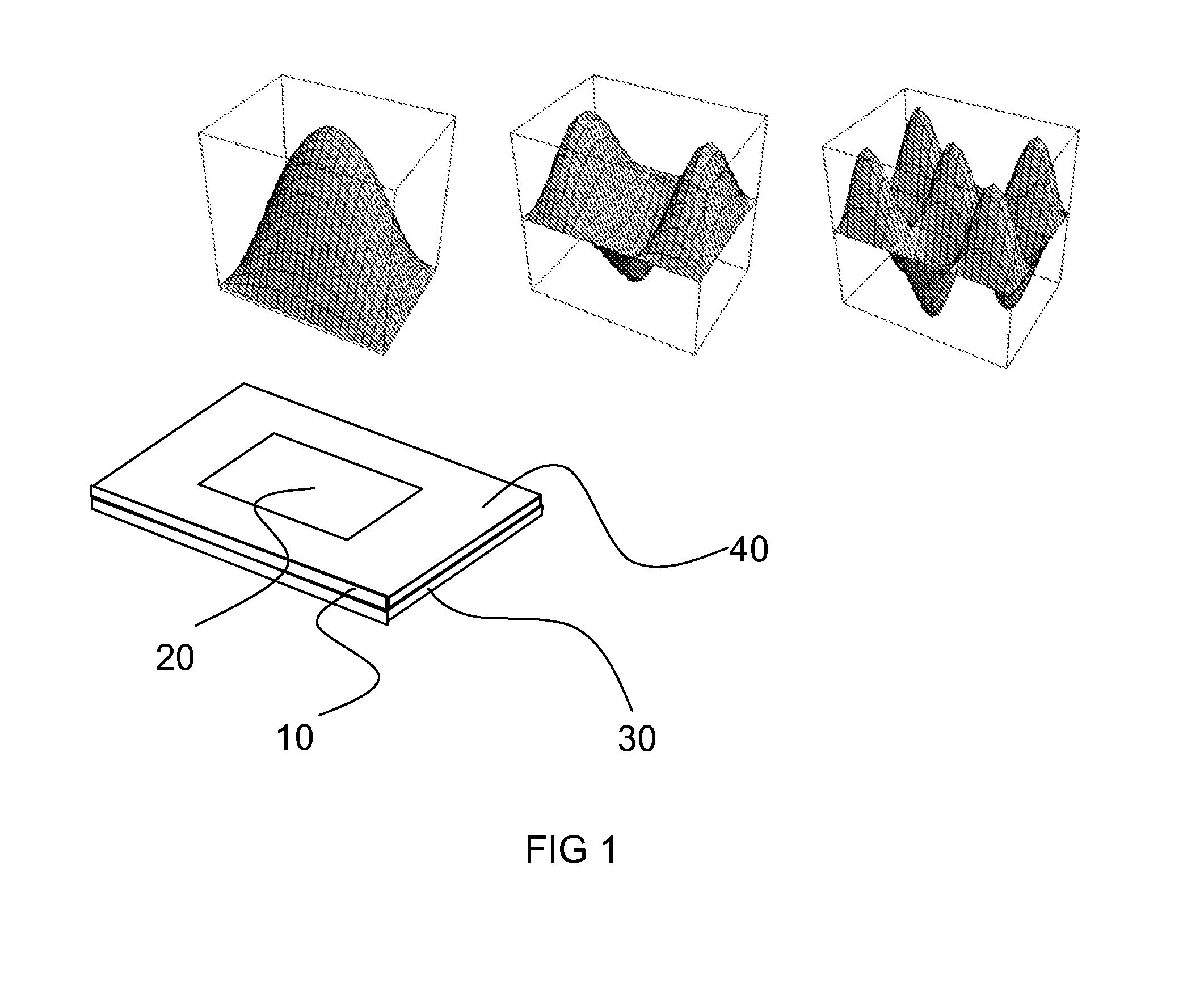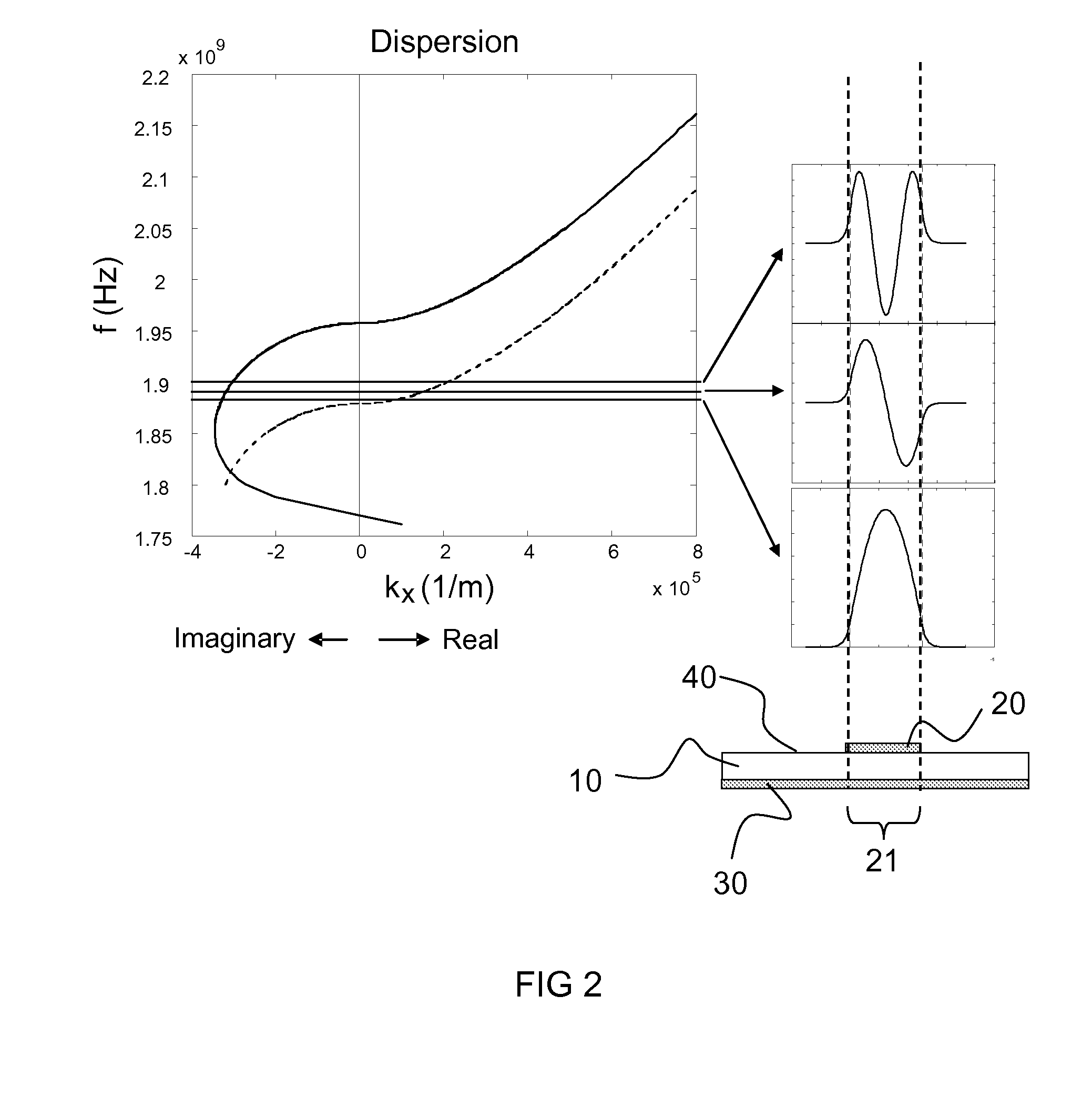Method of manufacturing a bulk acoustic wave device
a technology of acoustic waves and bulk acoustic waves, which is applied in the manufacture/assembly of piezoelectric/electrostrictive devices, electrical equipment, cable/conductor manufacturing, etc., can solve problems such as difficulty in achieving, and achieve the effect of reducing insertion loss, increasing the quality factor of said desired eigenmode, and achieving the effect of dispersion characteristics in the electrode region
- Summary
- Abstract
- Description
- Claims
- Application Information
AI Technical Summary
Benefits of technology
Problems solved by technology
Method used
Image
Examples
Embodiment Construction
[0065]The design of vertically-coupled BAW filters is relatively straightforward. The required inter-resonator coupling-strengths can be calculated from standard filter theory. Once these parameters are known, one-dimensional simulations can be used to design the layer stack of a device providing the required coupling. The lateral layout is then easily determined based on the required impedance.
[0066]Unfortunately, the realization of filters of this type is rather impractical. It is essential that the stacked resonators have a resonance frequency exactly matched to the desired filter frequency. Furthermore, vertical coupling necessarily requires many layers: at least two piezoelectric layers, as well as electrodes, and coupling layers (typically three). A more cost-effective alternative to vertical coupling is therefore desirable.
[0067]To avoid the problems associated with VBAW filters, embodiments of the current invention provide improved designs for laterally-coupled BAW filters. ...
PUM
 Login to View More
Login to View More Abstract
Description
Claims
Application Information
 Login to View More
Login to View More - R&D
- Intellectual Property
- Life Sciences
- Materials
- Tech Scout
- Unparalleled Data Quality
- Higher Quality Content
- 60% Fewer Hallucinations
Browse by: Latest US Patents, China's latest patents, Technical Efficacy Thesaurus, Application Domain, Technology Topic, Popular Technical Reports.
© 2025 PatSnap. All rights reserved.Legal|Privacy policy|Modern Slavery Act Transparency Statement|Sitemap|About US| Contact US: help@patsnap.com



